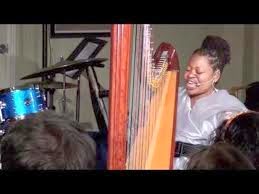
The Black Arts Movement: History
 The
Black Arts Movement (BAM) occurred during the mid 1960s to 1975. The
activist and writer, Leroi Jones, also known as Amiri Baraka, founded
the movement in Harlem after the assassination of Malcolm X. Jones
also established the Black Arts Repertory Theatre/School (BARTS) as an
outlet for BAM. The movement was considered the artistic sector of the
Black Power Movement. In an essay concerning the Black Arts Movement,
Larry Neal stated that the literary movement was the “Aesthetic and
Spiritual Sister of Black Power”. It was also considered one of the most
influential movements to African American literature due to its ability
to inspire blacks to write. Overall, BAM inspired the creation of Black
Publishing Companies, theaters, journals, magazines and institutions.
The main critiques of the controversial movement by scholars were that
it was sexist, homophobic and racially exclusive.
The
Black Arts Movement (BAM) occurred during the mid 1960s to 1975. The
activist and writer, Leroi Jones, also known as Amiri Baraka, founded
the movement in Harlem after the assassination of Malcolm X. Jones
also established the Black Arts Repertory Theatre/School (BARTS) as an
outlet for BAM. The movement was considered the artistic sector of the
Black Power Movement. In an essay concerning the Black Arts Movement,
Larry Neal stated that the literary movement was the “Aesthetic and
Spiritual Sister of Black Power”. It was also considered one of the most
influential movements to African American literature due to its ability
to inspire blacks to write. Overall, BAM inspired the creation of Black
Publishing Companies, theaters, journals, magazines and institutions.
The main critiques of the controversial movement by scholars were that
it was sexist, homophobic and racially exclusive.
During BAM, the 2nd
Wave of the Women’s Movement, the Women’s Liberation Movement was
taking place. However, Black Feminism became an important political
statement conveyed by the women of the Black Arts Movement. Popular
topics of these women were race and economic status, sexism, class
oppression and racism. The spirit of the movement was not only to
express creativity but also to stabilize the black community.
The reimagination of America, the overarching project of the 1960s and
1970s Black Arts movement (BAM), remains its continuing legacy. This
project emphasized the discovery that “there is no American literature;
there are American literatures . . . [by] those who have their roots in
the most ancient civilizations - African, Asian, Mexican [,] . . .
Native American . . . [and] the literature of the European settlement
regime . . .” This study examines the work of black women writers in
poetry, drama, fiction, autobiography, and theoretical essays as it
highlights the deep implication and outcomes of that discovery. In Black Fire,
the signal anthology of the period, Amiri Baraka and Larry Neal
introduce “the founding fathers and mothers of our nation.” The founding
mothers, with other vanguard women writers, strengthen the
revolutionary ferment of the movement to resonate its themes: a
renegotiation of power relations between black and white America, a
disturbance of ideological imperatives of identity, and a re-direction
of the sources for literary production. They also interject another
theme: a renegotiation of the power relations between black men and
women - itself a revolutionary advent.































































No comments:
Post a Comment